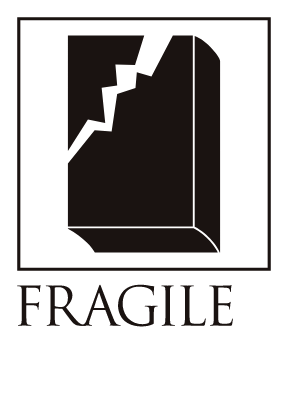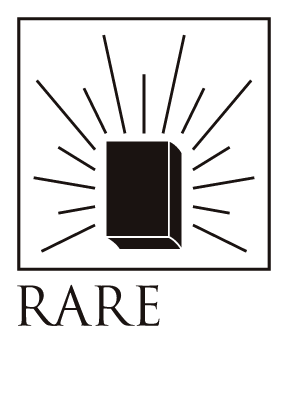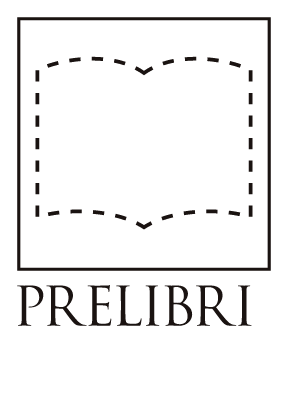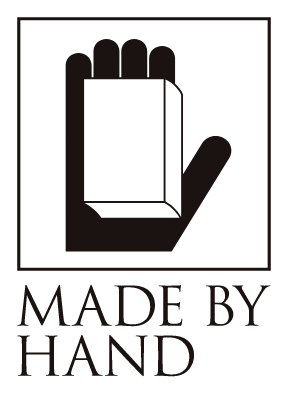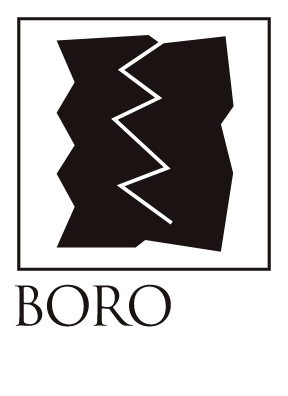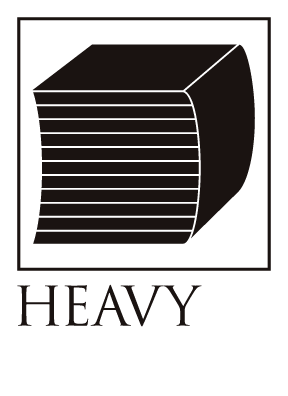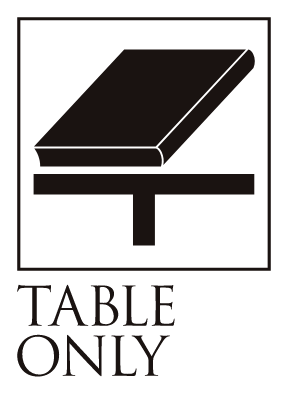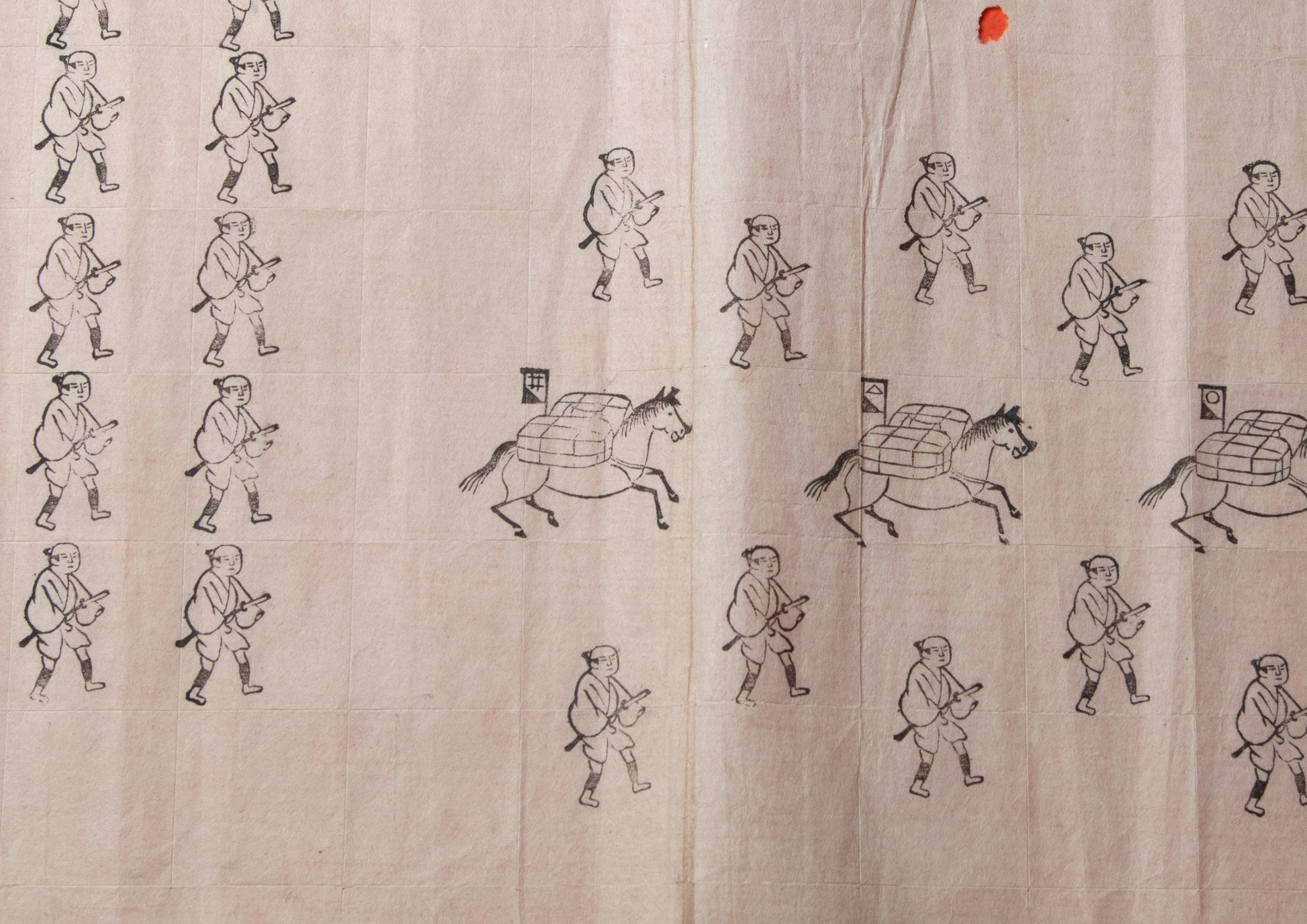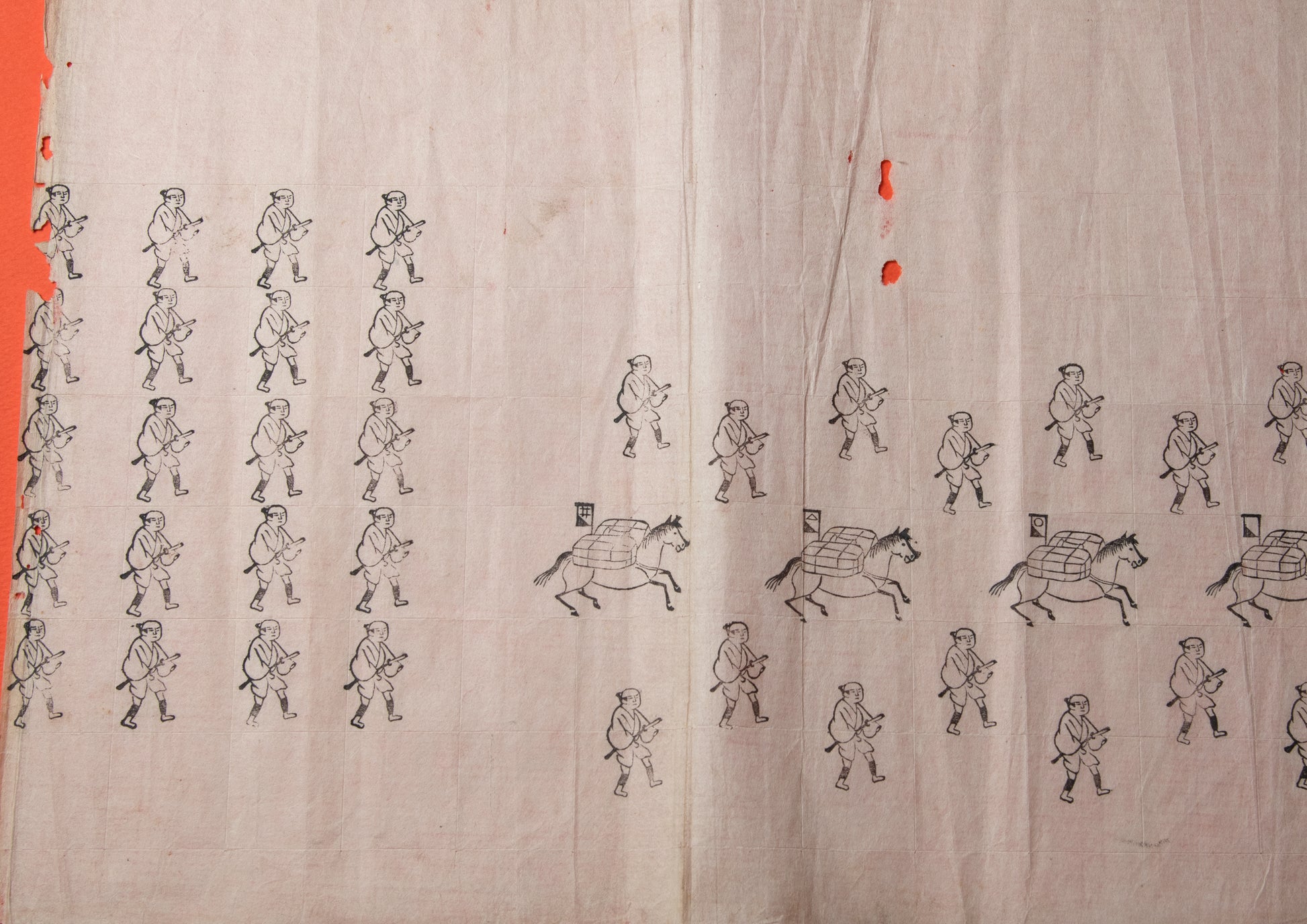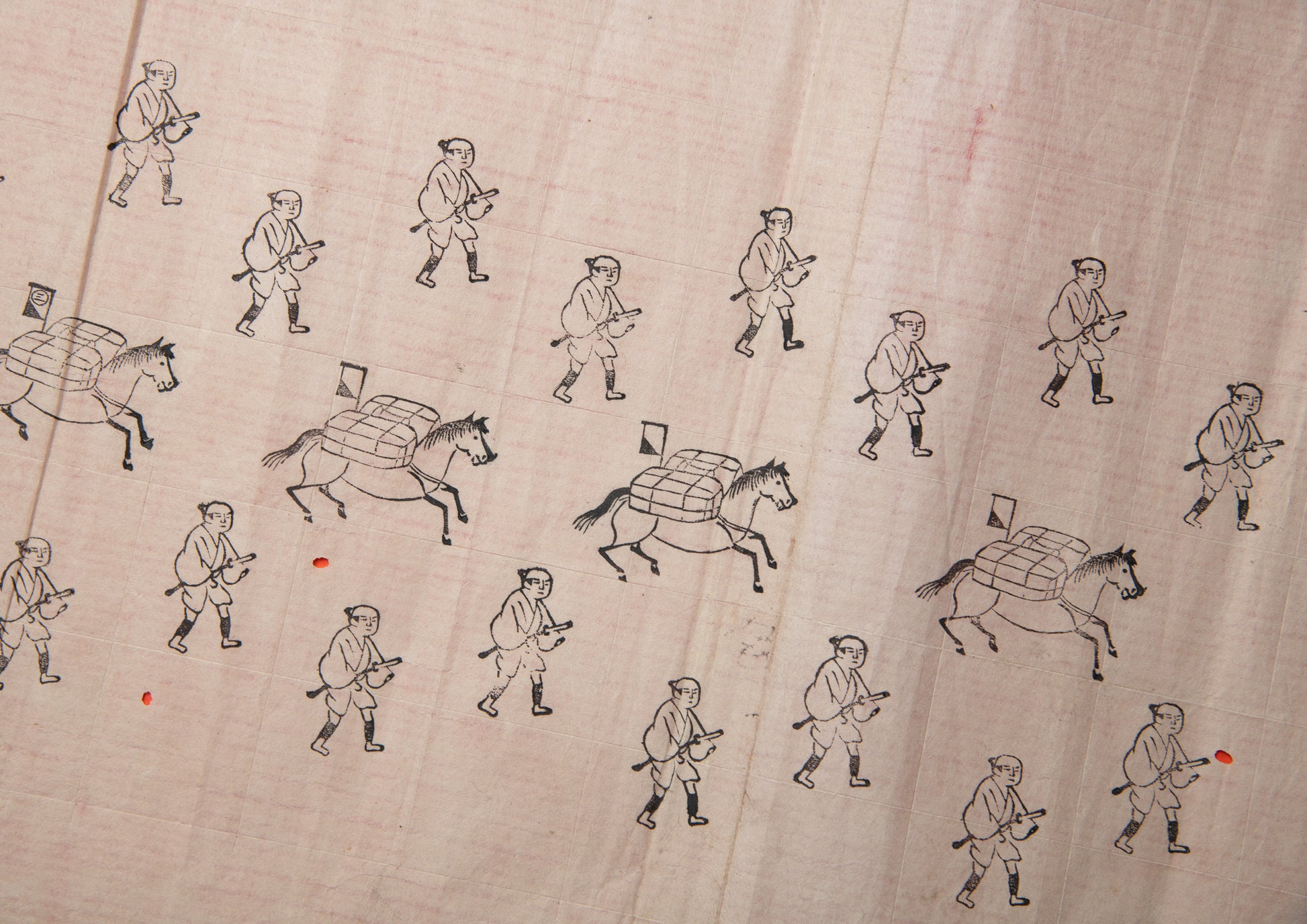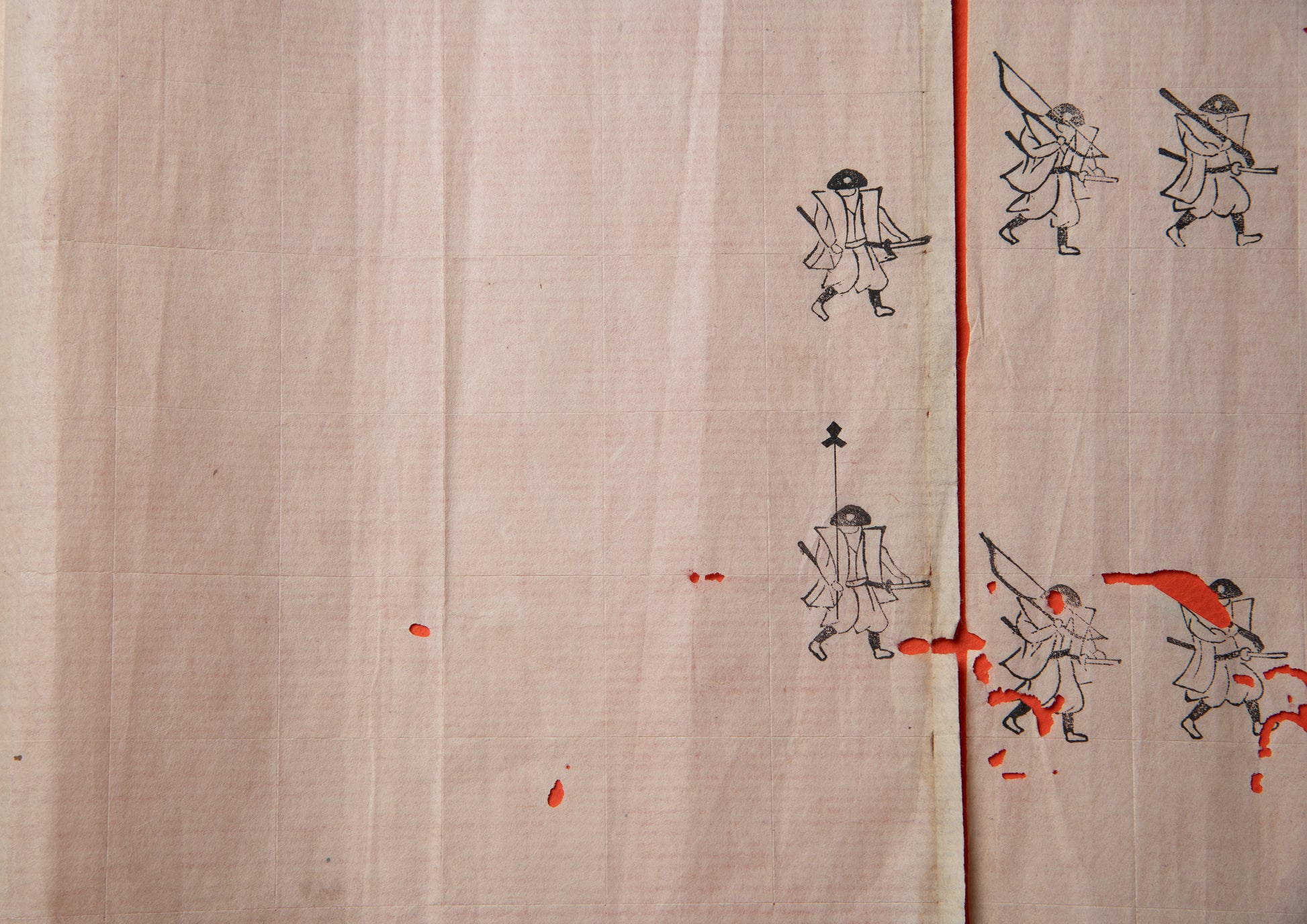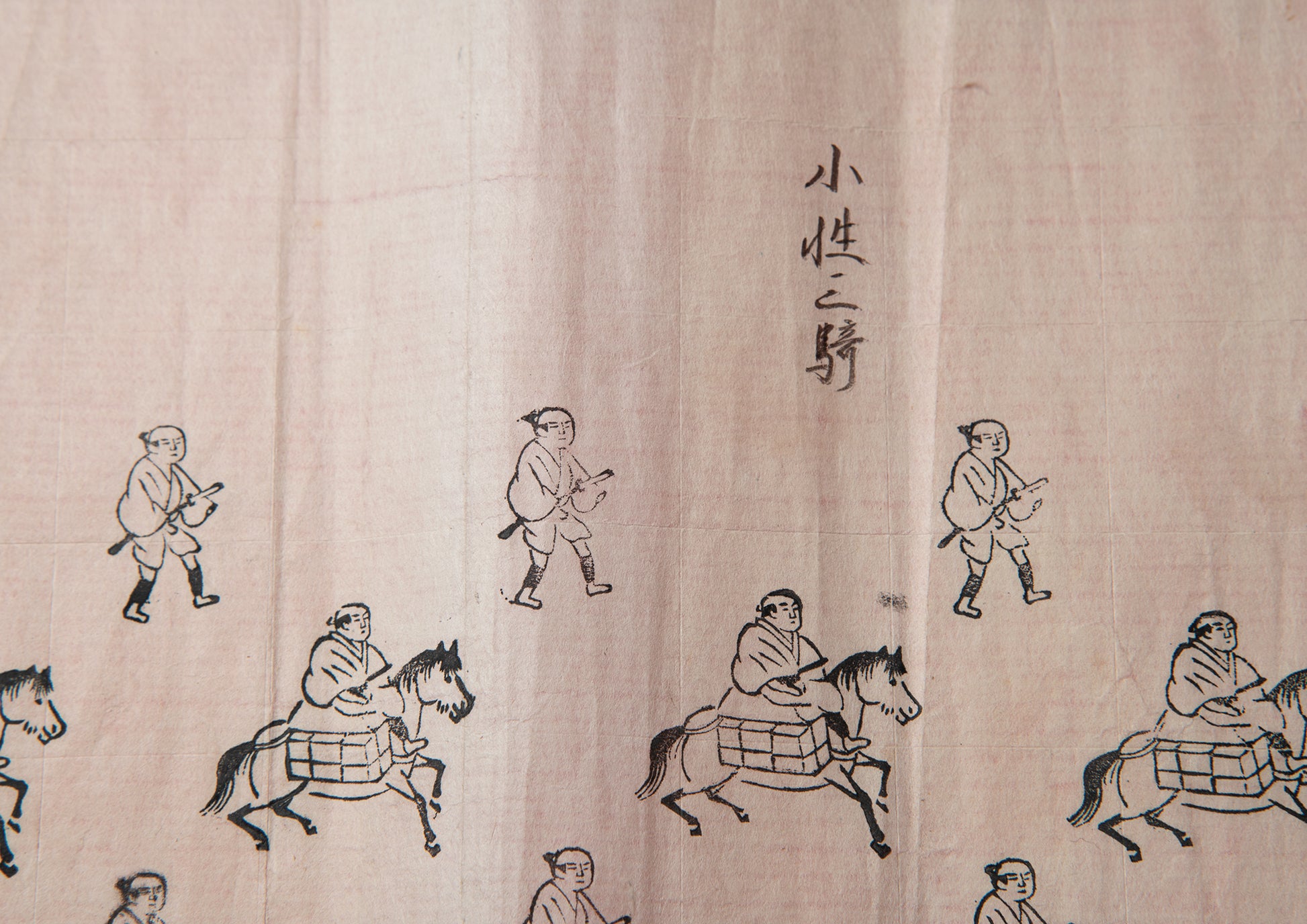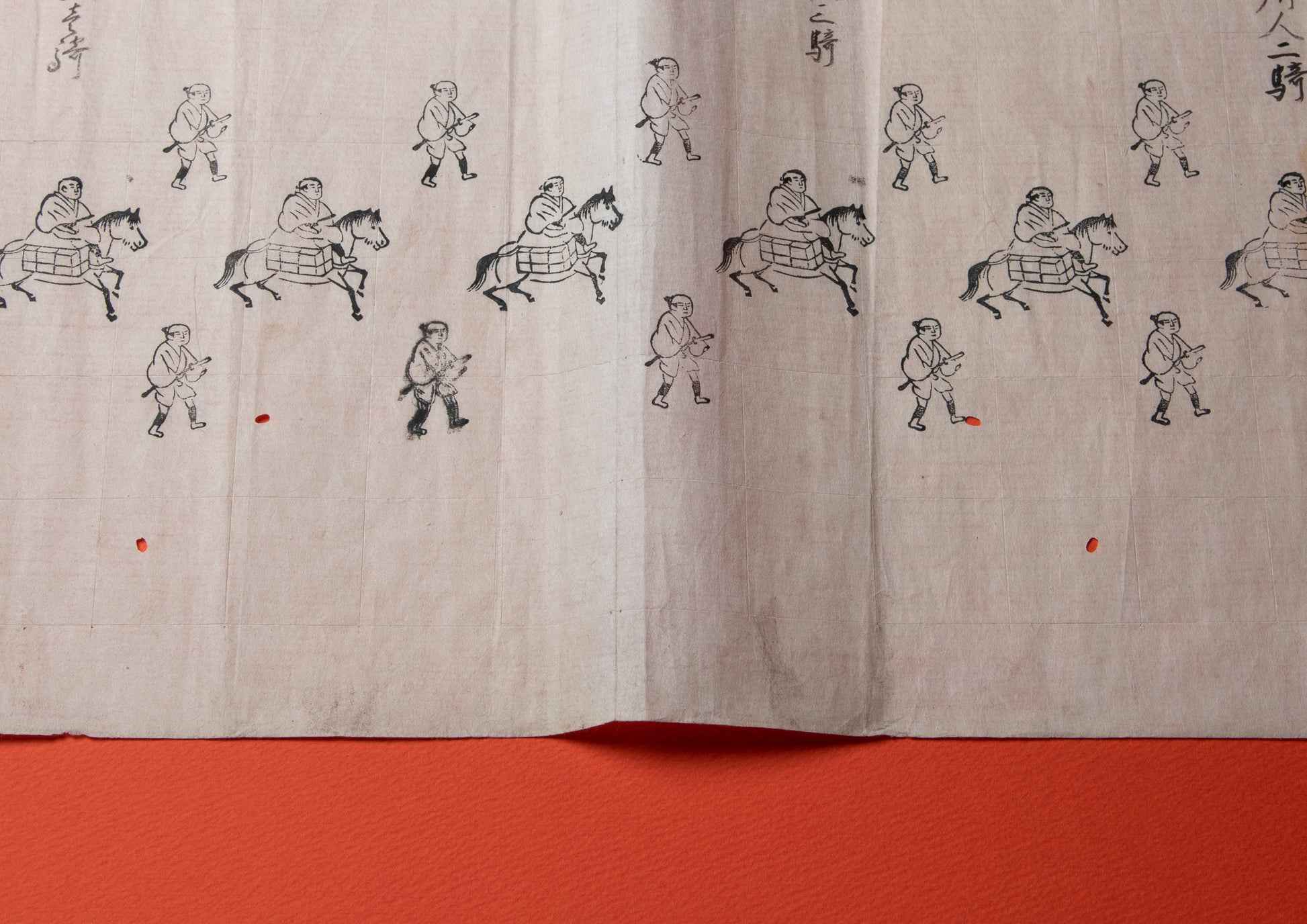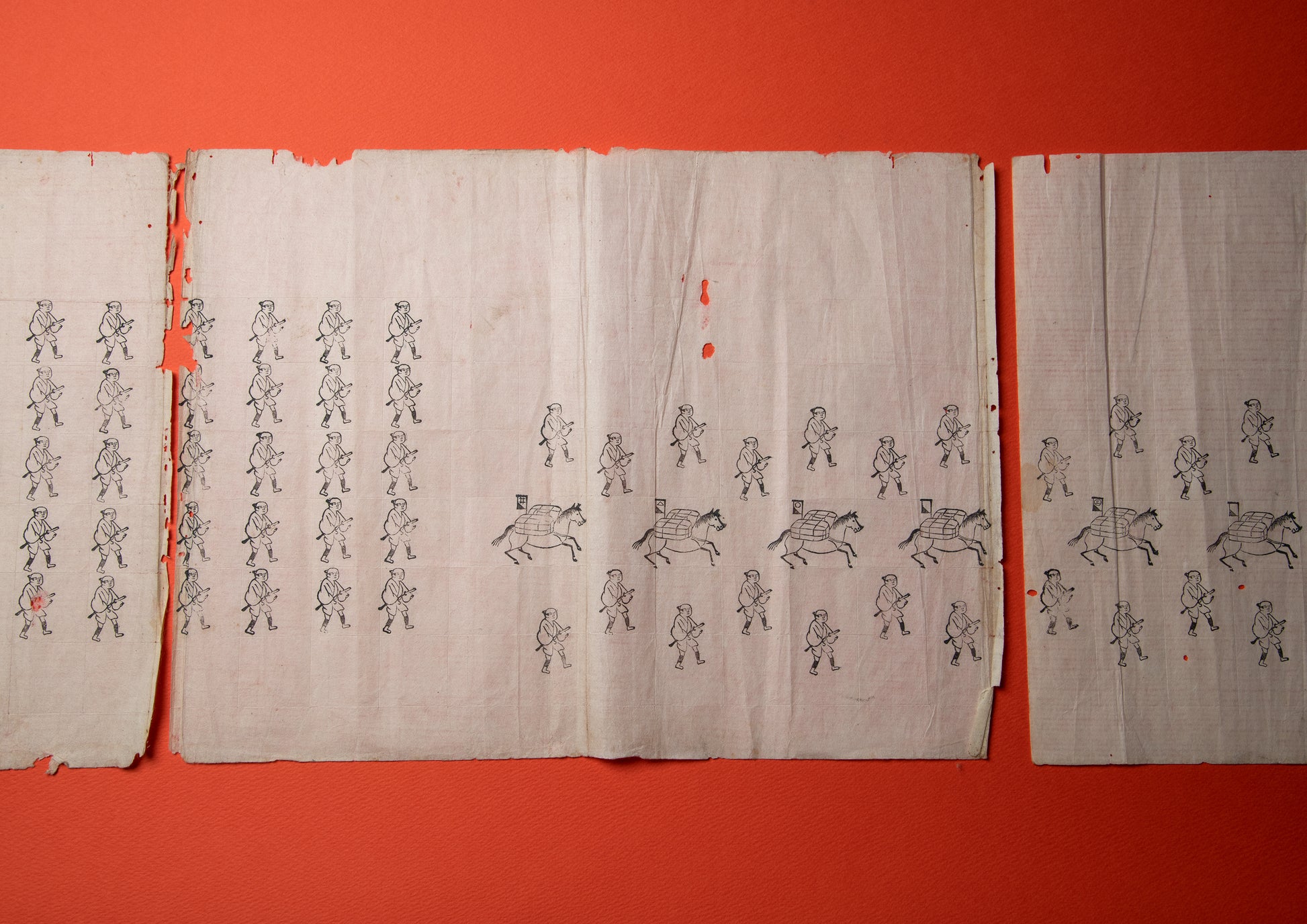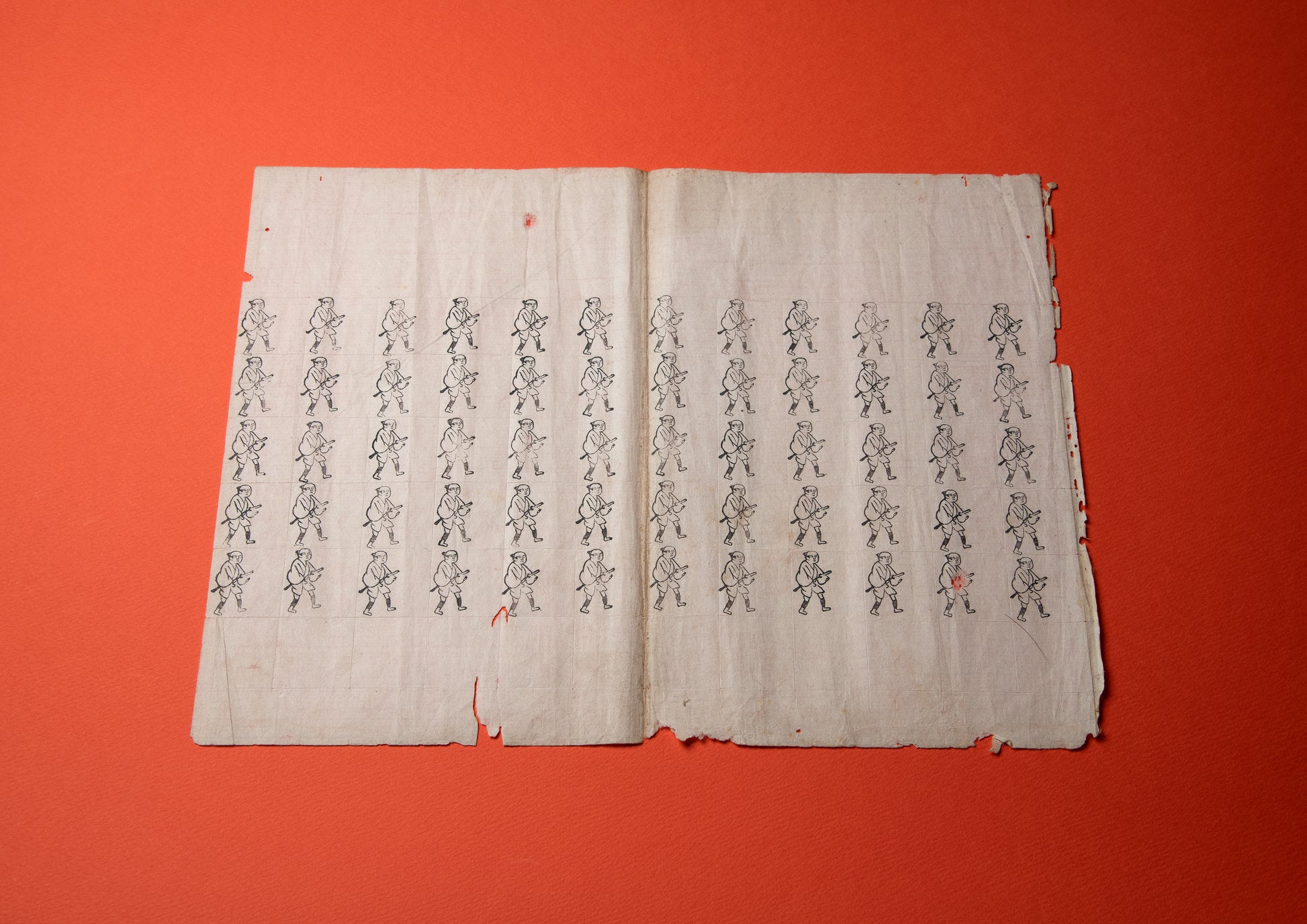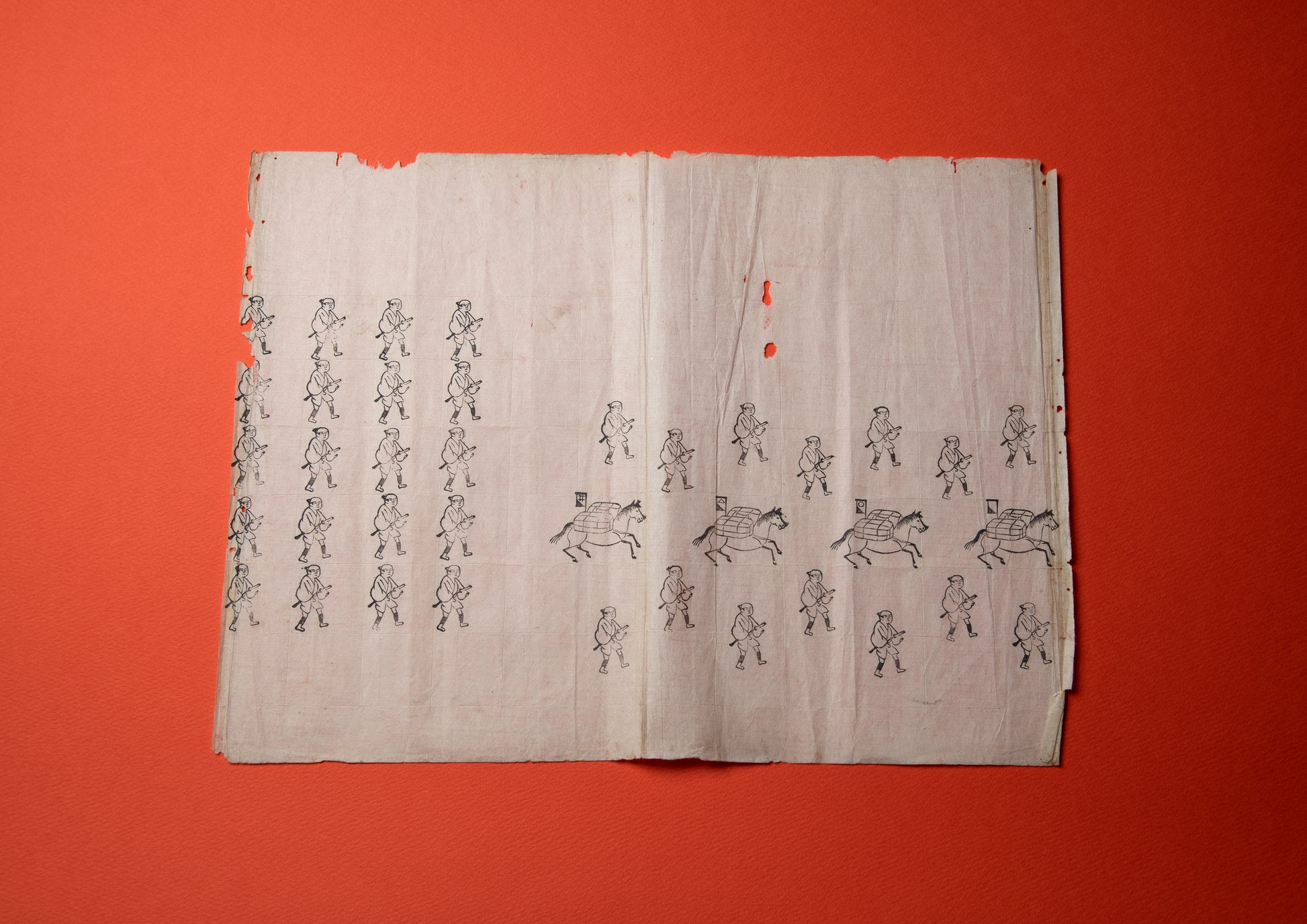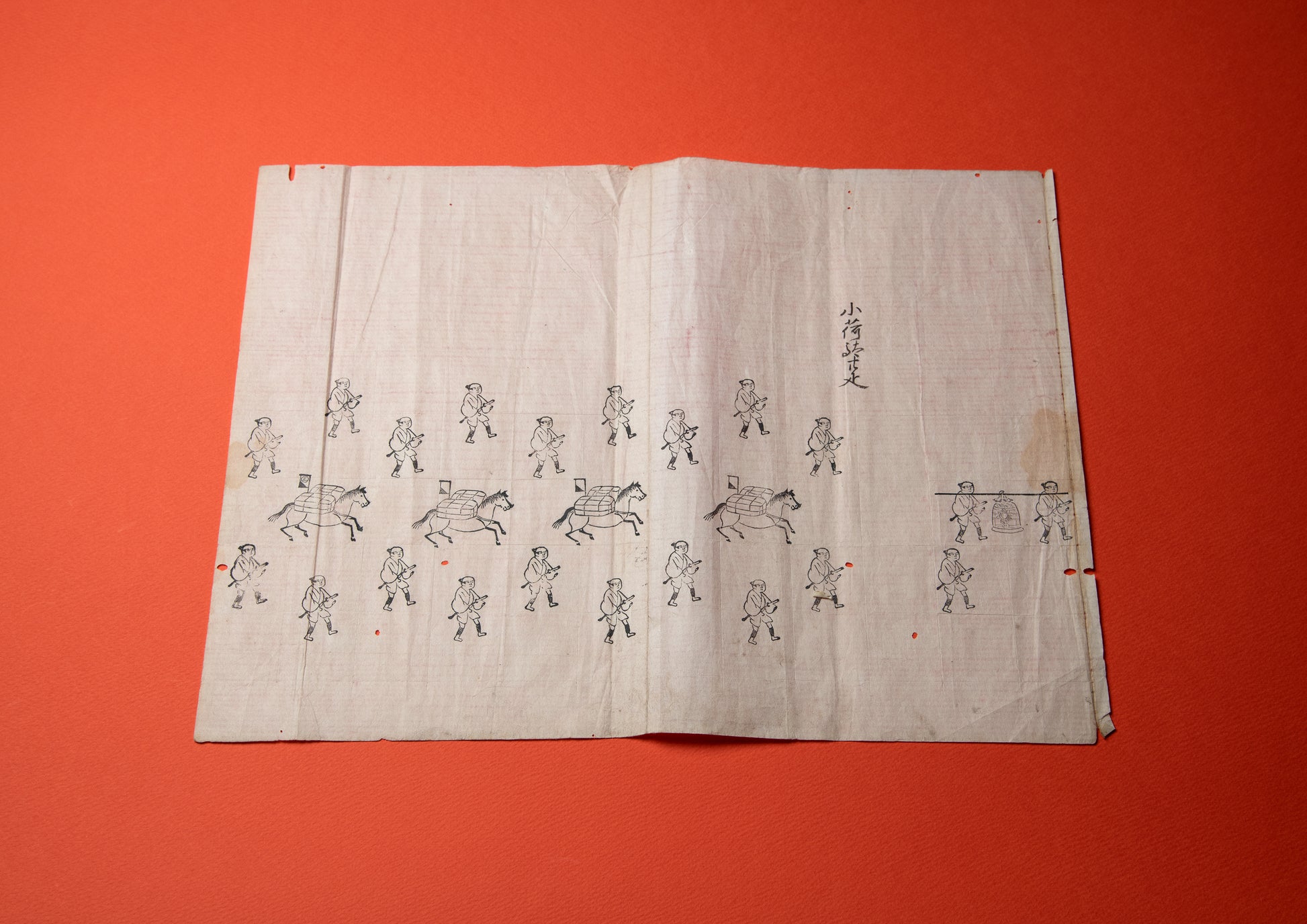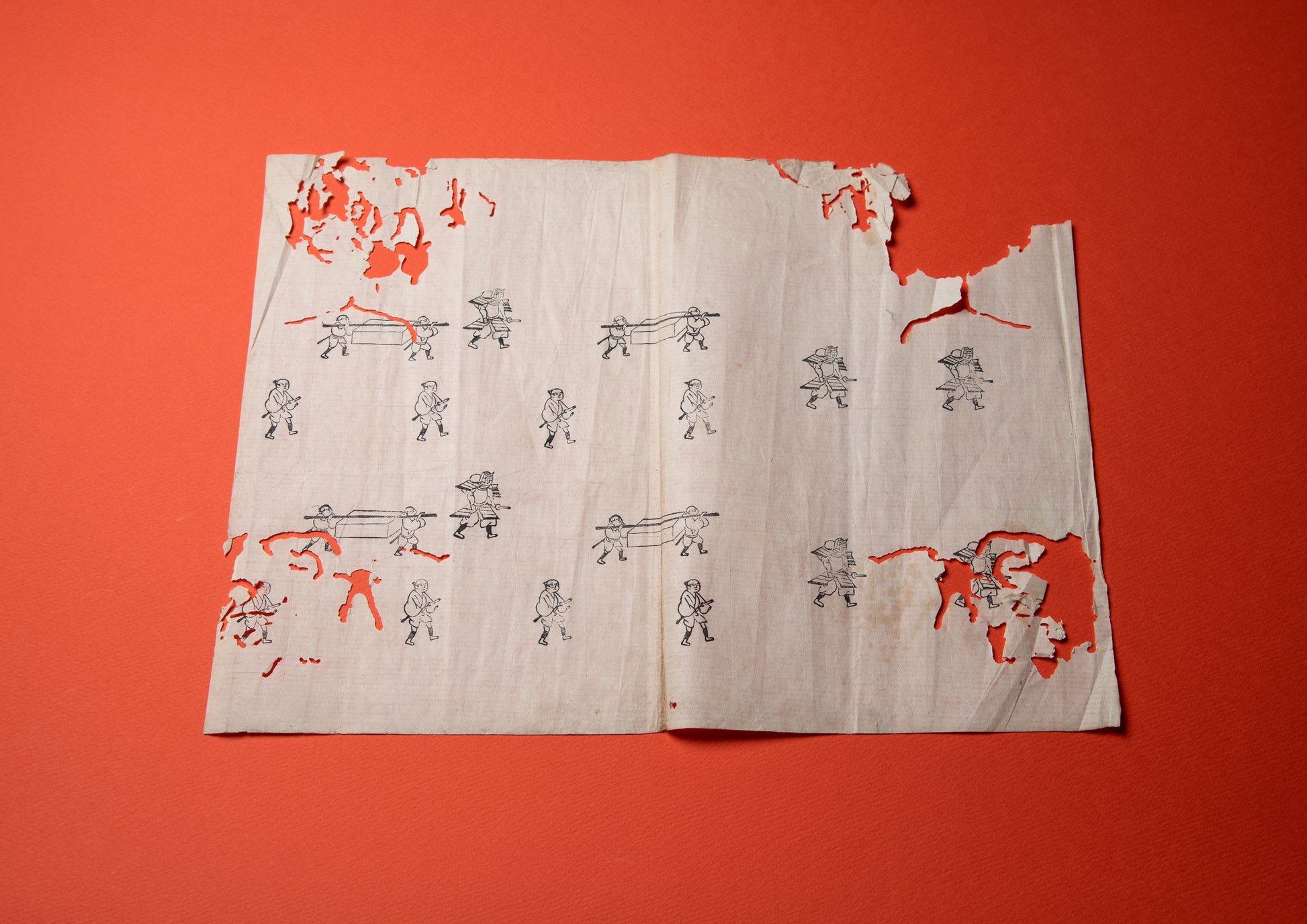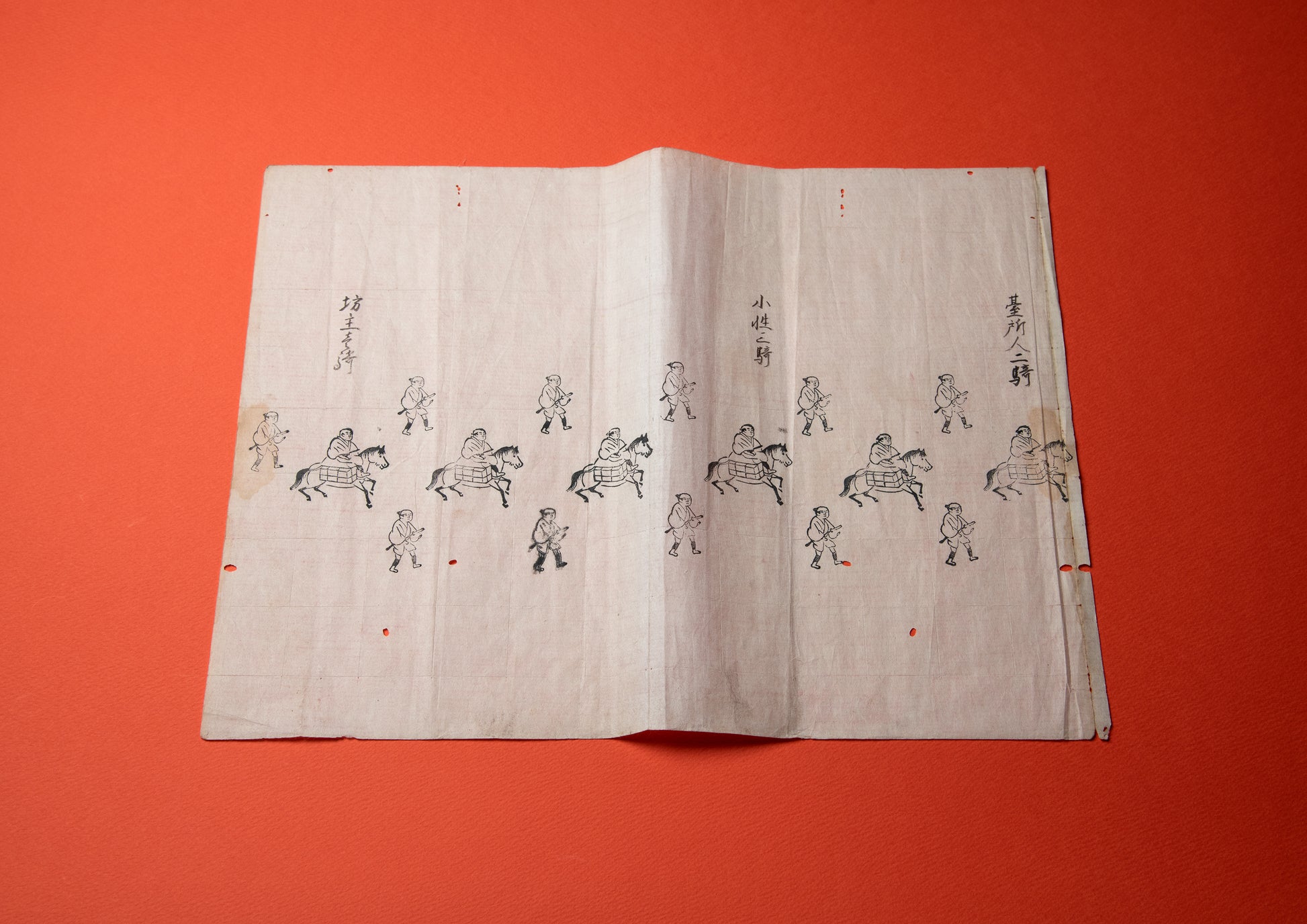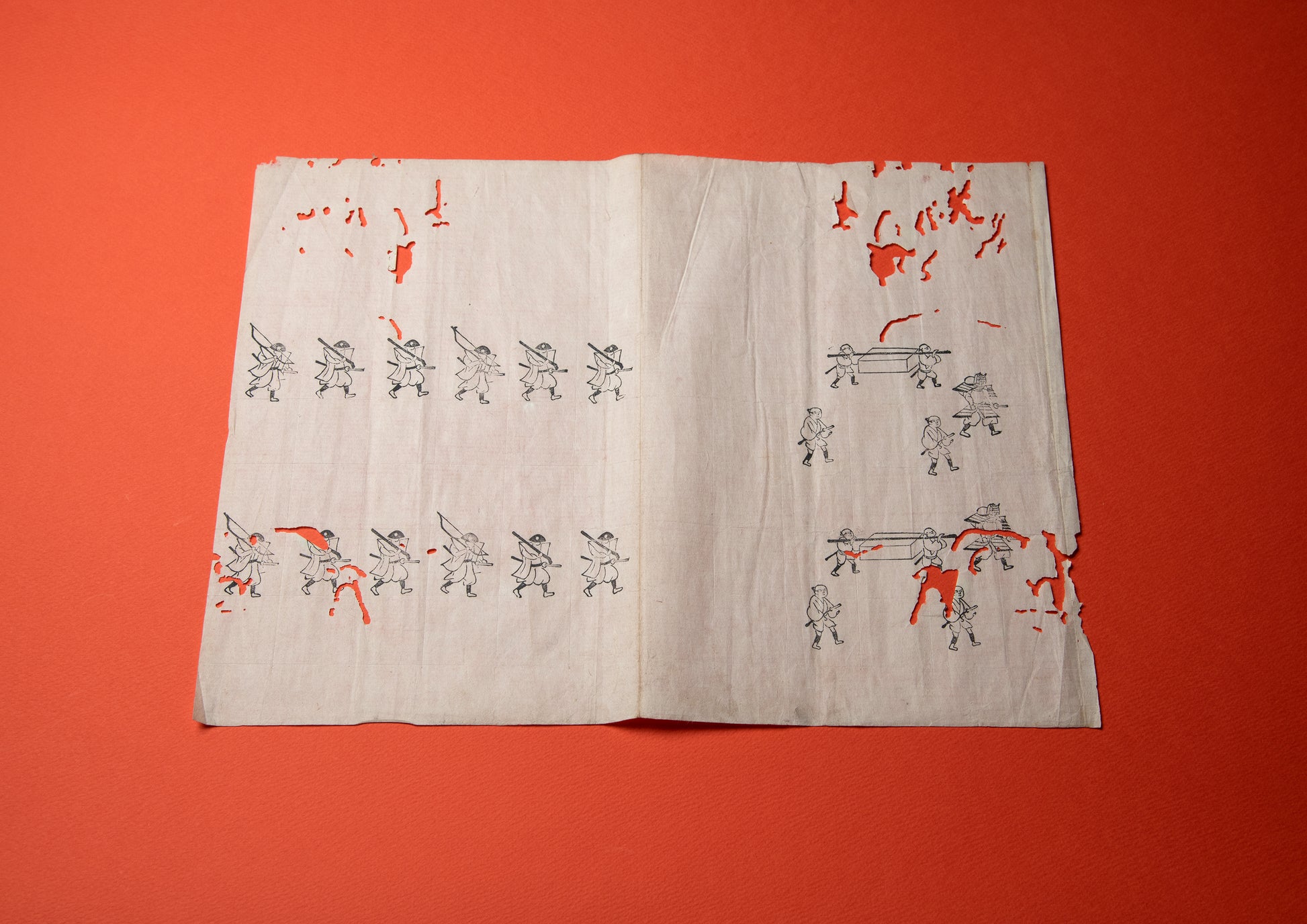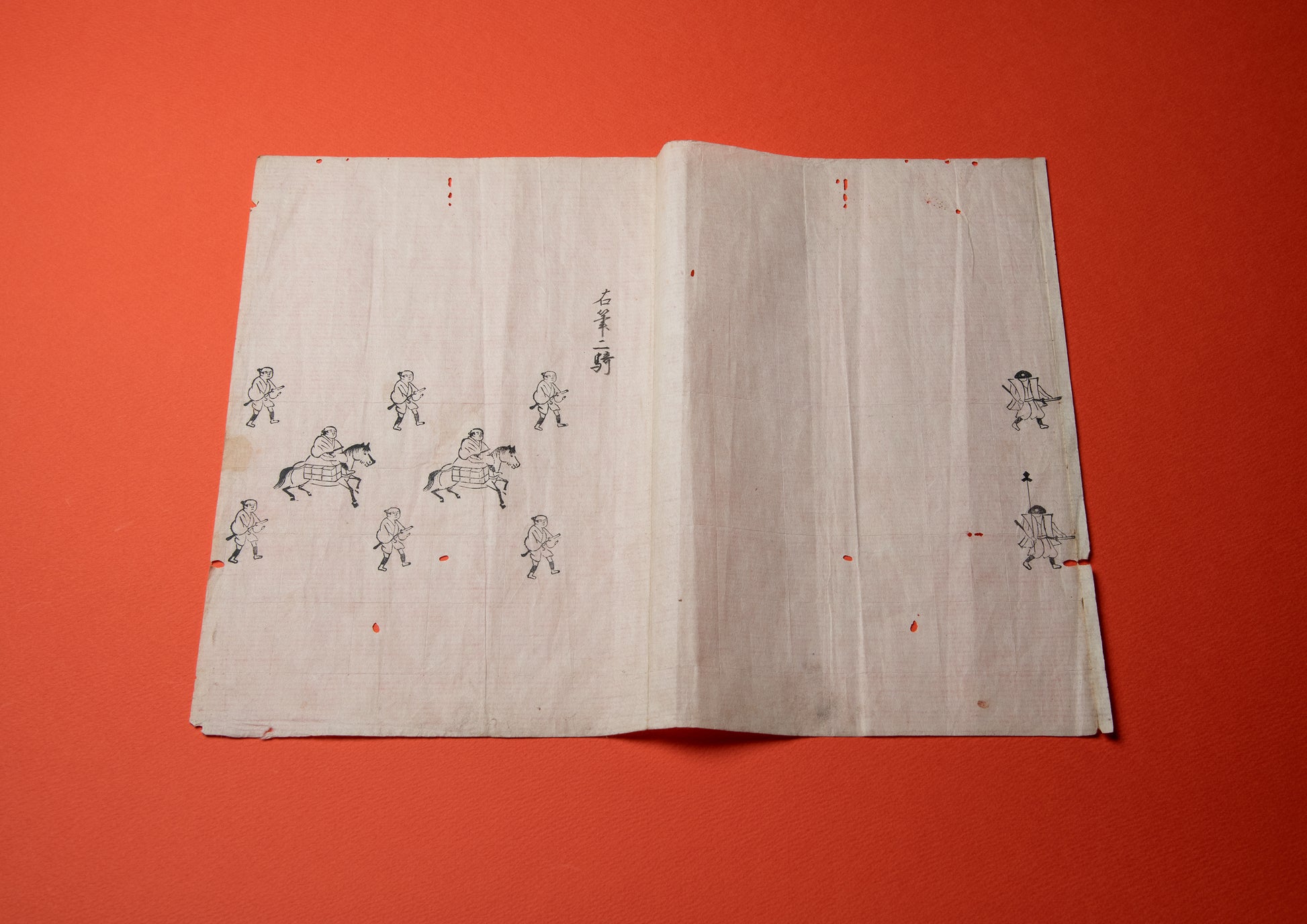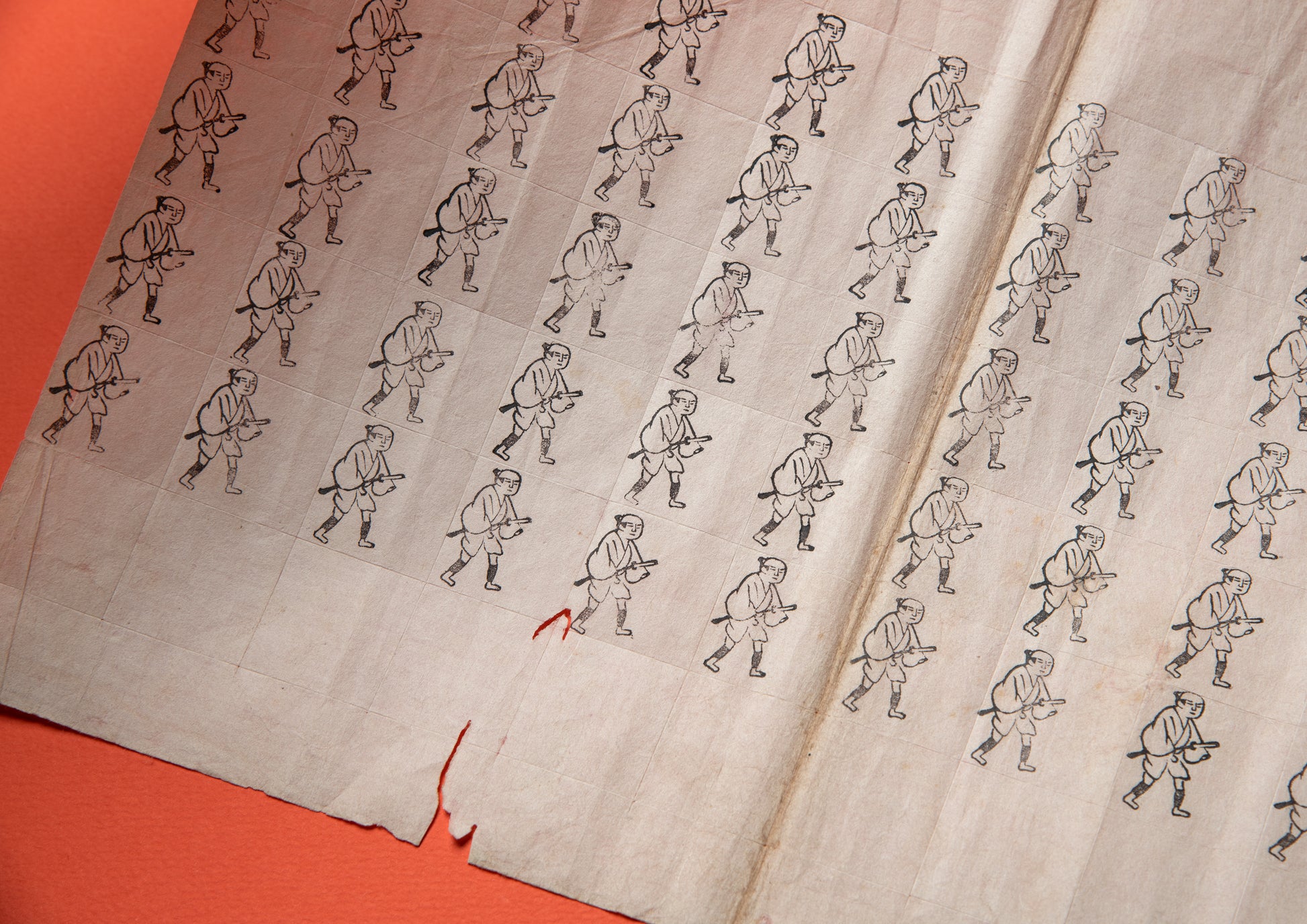Stamp Daimyo procession
Bibliographic Details
- Title
- スタンプ大名行列
- Author
- 不明 / ANONYMOUS
- Publisher
- 不明 / ANONYMOUS
- Year
- 江戸初期〜中期 / Early to mid-Edo period
- Size
- h272mm × w365mm
- Weight
- 0.01g 以下
- Pages
- 8
- Language
- 日本語 / Japanese
- Materials
- Paper
A rare item from the Edo period
Phantom Stamp Scroll
A cute procession of feudal lords
This time, I received "Stamp Daimyo Procession" (powder book) from Sato Masago.
What catches your eye are the comically repeated figures of warriors, monks, flag bearers, and horse riders, which seem to appear in games from the heyday of the Famicom. The content seems to be a very serious depiction of a samurai procession, but for some reason it feels "cute" because it is a stamp picture, not hand-drawn. It is a truly endearing masterpiece, in which several types of woodblocks (stamps) carved from wood were repeatedly pressed to complete the picture of a large procession. Unfortunately, since it is a powder copy that is not complete, the official name of the work is unknown, but it seems to resemble a picture scroll called "Ohatamoto Sonae Saho," which is in the National Diet Library and is said to depict a procession at the time of going to battle...or not.
If we look closely, we can see faint creases and stamps of people and other figures are pressed along these creases, which suggests that this was probably a preliminary sketch.
The woodblocks used in this work are of 10 types, including armored warriors, spear-group foot soldiers, archers, gunners, horse-riding magistrates, and monks. In addition, there are inscriptions about the formation of the army, such as two right-hand men, a small packing carrier, and two kitchen soldiers.
However, all you need is woodblocks depicting warriors and foot soldiers, and ink. That's it. All you have to do is stamp the same woodblock over and over again like a stamp to record the formation. It's a bit dizzying to think how many times it must have taken to make a scroll.
Judging from the dates of similar items, the piece is thought to date to the early to mid-Edo period, and the procession diagram, which can be seen as a symbol of samurai power, is to be made using stamps rather than hand-drawn.
One theory is that this was a desperate measure taken by feudal lords who did not have the funds to commission artists, but the truth of this is uncertain.
This stamp painting is actually a rare item that is hard to find, and even if you search for one created using the same technique regardless of the subject, it seems that only three libraries in Japan have it: the National Diet Library, the Japan Folk Crafts Museum, and the Waseda University Library. There are many splendid picture scrolls that depict daimyo processions, painted by samurai families to demonstrate their dignity and wealth and leave them for posterity, but most of them are hand-painted works commissioned to painters. It is said that there are other stamp versions like this one, but their whereabouts are unclear. Although it is a stamp, it is not printed, so the same work is not produced multiple times, and even when compared to stamps from similar stamp picture scrolls, the size and poses of the characters are not uniform, and there are various sizes depending on the picture scroll. Not only scrolls but also folding screen paintings created using this stamp technique have been found, and although the specific production method and time are not clear, it seems certain that there was a certain demand for them around the mid-Edo period, and a supply system was established.
The picture scroll "Ohatamoto Sonae Saho," which depicts a procession before going to battle and is housed in the National Diet Library, is an astonishing 13 meters long. Even at this length, it is clear that only five stamps were reused for the 54 horses that appear in the work. The horse banners and flags were painted with a brush to make it less obvious that the same stamps were used repeatedly. This heartbreaking effort, from creating the stamps to printing and coloring them! Whether you see it as a sadness or an invention, it seems fair to say that poverty is one of the mothers of invention.
[Reference Links]
National Diet Library "Ohatamoto Bishikakuho"
Waseda University Library "The Etiquette of Takeda Shingen's Bannermen"
Shibata City History Library "The History of Stamps, Woodblock Prints and Printing"
Text by Ema Otobe
